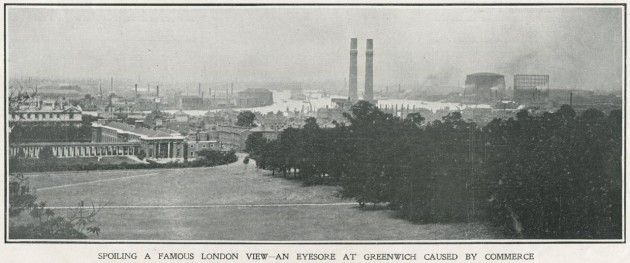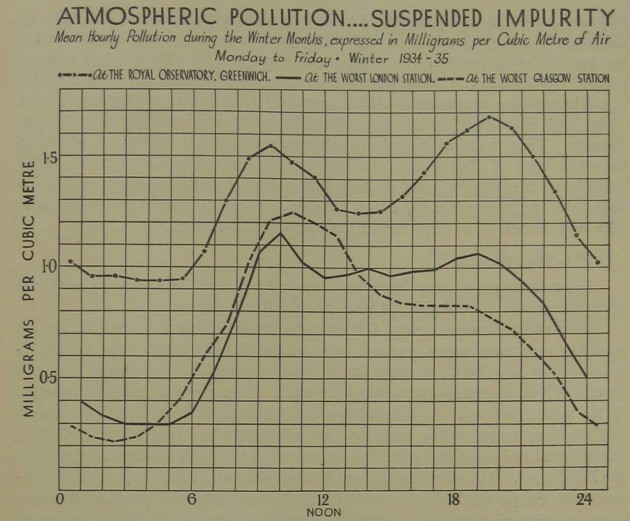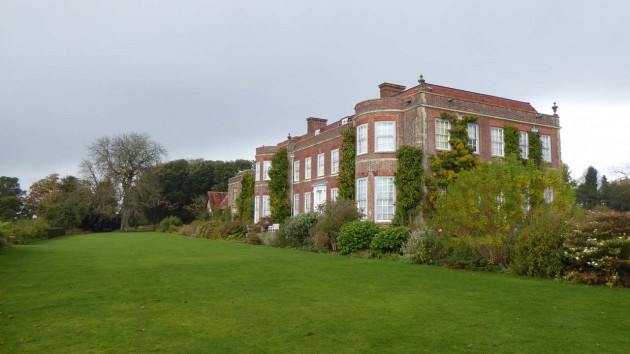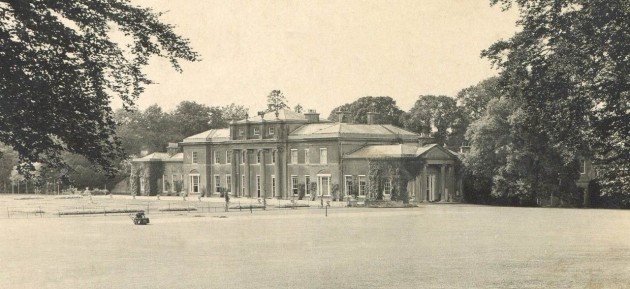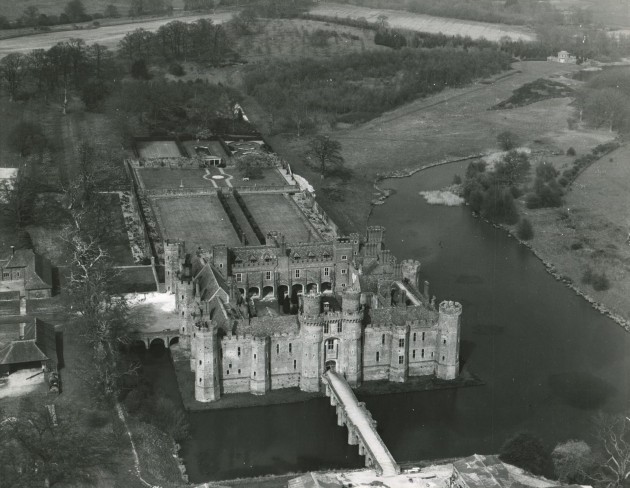…where east meets west
- Home
- Brief History
- The Greenwich Meridian
- Greenwich
(1675–1958) - Herstmonceux
(1948–1990) - Cambridge
(1990–1998) - Outstations (1822–1971)…
- – Chingford (1822–1924)
- – Deal
(1864–1927) - – Abinger
(1923–1957) - – Bristol & Bradford on Avon
(1939–1948) - – Bath
(1939–1949) - – Hartland
(1955–1967) - – Cape of Good Hope
(1959–1971)
- Administration…
- – Funding
- – Governance
- – Inventories
- – Pay
- – Regulations
- – Royal Warrants
- Contemporary Accounts
- People
- Publications
- Science
- Technology
- Telescopes
- Chronometers
- Clocks & Time
- Board of Longitude
- Libraries & Archives
- Visit
- Search
Deteriorating conditions at Greenwich and the selection of a new location for the Observatory
After years of deteriorating conditions at Greenwich, the Observatory moved to Herstmonceux Castle in Sussex. The move began in 1948 and was completed in 1957. The Observatory remained at Herstmonceux until the end of the 1980s when it was moved to Cambridge. This page should be read in conjunction with:
The buildings and grounds at Herstmonceux
People, politics and changing priorities
The increasing industrialisation of London
During the nineteenth century, as London grew and became more industrialised, the observing conditions at Greenwich gradually deteriorated. Conditions were so bad in the early 1870s that Airy began noting in his journal the date of his first annual sighting of some of the central London landmarks. In 1873, he recorded that he had first seen the Victoria Tower at the south-west end of the Palace of Westminster (which was a mere five and a half miles away) on 2 June (RGO6/26/182). The following year, he recorded that St Paul’s Cathedral (which is less than five miles away and is today visible from the Observatory on most days of the year) became ‘fairly visible for the first time’ on 17 May (RGO6/26/201).
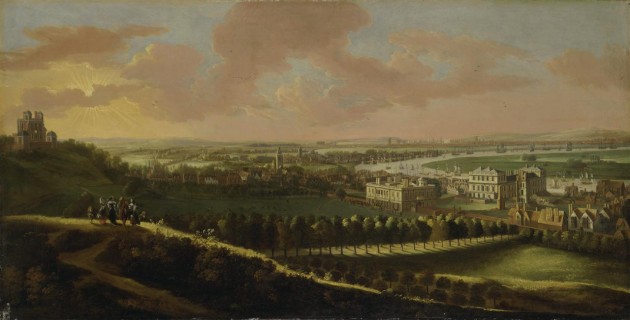
Greenwich, with London in the distance c.1680. The Observatory is depicted on the left, the River Thames on the right. Jan Vorsterman (Yale Center for British Art)
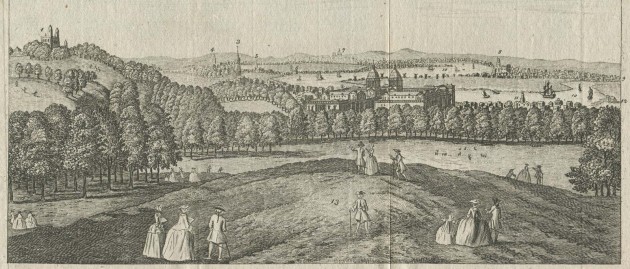
A view of London from One-Tree-Hill in Greenwich Park (detail). From The Gentleman's Magazine, January 1754. The engraving was probably derived from an engraving of a Tillemans painting published in 1744 (or a copy published in 1752), the painting itself having been completed in the early 1730s. Key: 1 Royal Observatory, 2 Greenwich Hospital, 3 Greenwich Church [St Alphage's], 4 St Paul's at Deptford, 5 St Nicholas, 6 The King's Yard [Deptford Dockyard], 7 St Paul's Cathedral London, 8 Lime-house church, 9 Blackwall, 10 River of Thames, 11 Crawley iron manufactory [Trinity Hospital with Crawley's house and warehouse to the right], 12 The gun-powder magazine, 13 One tree hill from whence this view was taken
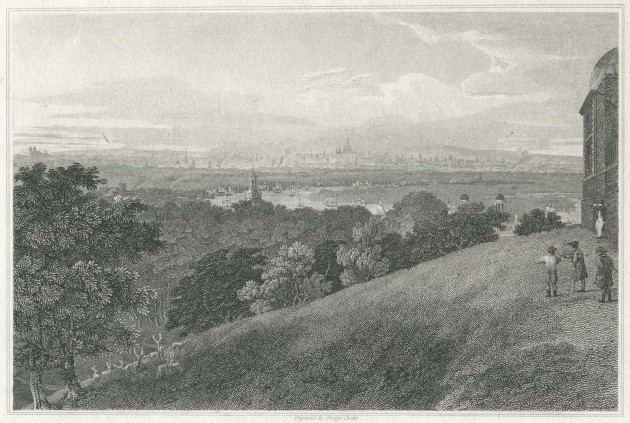
View of London (from Greenwich). Engraved by George Cooke and published by Longman, Hurst, Rees & Orme, 1 April 1809. In this view, St Paul's is in the centre on the horizon, whilst the Observatory is on the right. Note also Westminster Abbey on the extreme left and the large number of sailing ships moored on the Thames and in the London Docks
London & Greenwich Hospital from the Park. Watercolour by Arthur N Werrett M.Inst.RA, 1922, (12 x 8.1 inches). In this view, which was painted nearly 50 years after Airy made his comment about St Paul's, the Observatory can be seen on the left, while St Paul's and Tower Bridge (constructed between 1886 and 1894) can be seen on the skyline together with several belching chimneys 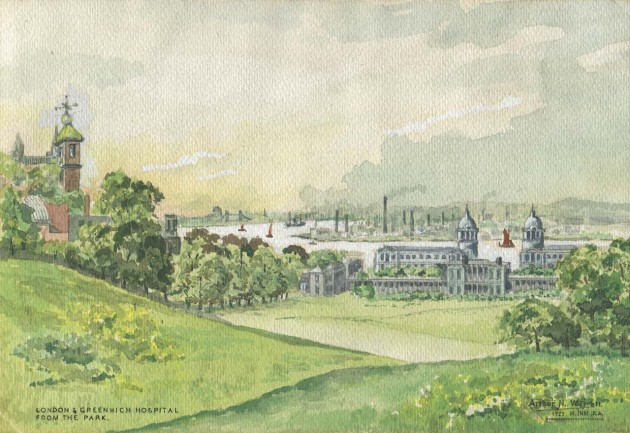
In 1881 Airy resigned as Astronomer Royal. William Christie his Chief Assistant, was appointed to replace him. It was under Christie, that the Observatory went through one of its greatest periods of expansion. In contrast to the changes that took place under Airy, the changes under Christie lacked focus being shaped instead by the unsolicited gifts of three large telescopes – the Lassell and the two Thompsons. Had a strategic plan been in place, it is not impossible that part of the Observatory at least, would have been located away from the smoke of Greenwich by the start of the twentieth century.
Even the unfortunate erection of the coal fired Greenwich Power Station on the line of the Meridian which commenced in 1902, and the furore that later followed, failed to motivate Christie and the Board of Visitors to consider a move. Quite the opposite in fact; for when in 1908, Melotte (a junior member of staff), discovered the eighth satellite of Jupiter, Christie claimed that this was testimony ‘to the suitability of the Greenwich climate for the observation of very difficult objects such as faint satellites and close double stars.’ One can only conclude that consciously or otherwise, Christie was more wedded to the convenience of his London location with its easy access to the learned societies, clubs and cultural opportunities, than he was to the need for securing improved observing conditions.
But the smoke pollution was not the only problem. By the time Christie retired, it was well established that a site like Greenwich, perched on the edge of a plateau, was less than ideal for making zenith observations due to the increased likelihood of refraction anomalies. What was required instead was a site where the terrain to the north and south was both level and open – a condition that could not be satisfied at Greenwich.
Arguing the case for a move
With all the investment that had been made so recently under Christie, Dyson (his successor) was hardly in a position to argue for a move – whatever he may have privately thought. So despite the problems of refraction anomalies he proceeded to set up the borrowed Cookson Floating Zenith Telescope in the courtyard and did the best that he could. The expected disturbance to the magnetic observatory when the nearby railways were due to be electrified did however force a relocation of that one single department away from Greenwich in the 1920s. But Dyson appears to have had no plans to move the rest of the Observatory. This task fell to Spencer Jones. Originally appointed by Dyson as his Chief assistant, Spencer Jones went on to become His Majesty’s Astronomer at the Cape, before returning to Greenwich as Astronomer Royal in 1933. On arriving back, it was immediately obvious to him just how much further observing conditions had deteriorated. He immediately set about collecting the evidence he required in order to persuade the Board of Visitors and the Admiralty of the need for a move. Observations of the atmospheric concentration of particulates began on 1 July 1934 and of sulphur dioxide on 1 January 1935.
There were four key problem areas that Spencer Jones identified as far as visual astronomy was concerned.
- Much reduced visibility or seeing, and the non-uniformity of the sky in different directions.
- Tarnishing of the mirrors and circles as a result of the sulphur dioxide in the atmosphere.
- Gritty particulates in the atmosphere causing damage to pivots and bearings when they settled.
- Light pollution caused by both an increase in the amount of street lighting and the nature of the lamps themselves.
The observing conditions at Greenwich were not the only thing causing concern. The magnetic Observatory at its new site at Abinger was beginning to suffer as a result of the electrification of the Guildford Line.
Having considered a possible relocation of the Observatory to a site adjacent to the Norman Lockyer Observatory on Salcombe Hill near Sidmouth in Devon, the Board of Visitors formally rejected it at a special meeting on 16 March 1939, concluding that the site requirements for the magnetic observatory were always likely to be at odds with those for the visual observatory and that it was never going to be practical to reunite them on a single site. It was proposed instead that active consideration be given to a number of sites between the South Downs and the sea for the astronomical observatory and in Devon – either at Lynton or Hartland – for the magnetic one. With the outbreak of war that September, all such plans were necessarily deferred.
Choosing the new location
By 17 February 1944, the Admiralty had approved a move in principle (ADM190/6/264). Commenting to the press about the decision, Spencer Jones stated that there had been ‘only two alternatives, either to put up with the conditions at Greenwich and deteriorate into a second-rate institution, or to move away into conditions where useful work can be done’. By 1945, plans for relocating were advancing apace. Other things being equal, the Admiralty would have preferred a site some distance from the mainland of Europe, as this would have been easier to defend should there be future hostilities. But other things weren’t equal, and it was the view of the Astronomer Royal that owing to meteorological conditions and the presence of large industrial areas, a suitable site was not going to be found to the North or West of a line joining Kings Lynn, Reading and Bristol. This view was the one that prevailed as a suitable site was sought.
Over 70 possible sites were considered in the counties of Essex, Suffolk, Bedfordshire, Buckinghamshire, Hertfordshire, Kent, Surrey Sussex, Hampshire, Dorset and Wiltshire. From these a short list of five was compiled by the Astronomer Royal in consultation with the Department of the Civil Engineer-in-Chief, Admiralty, the Director of the Meteorological Office, and the Director of the geological Survey. All were substantial country estates in the south of England that had been requisitioned for the war effort. They were all visited in April by a subcommittee of the board along with the Astronomer Royal. Some had willing sellers and were on the market. Others, for example Hinton Ampner House in Hampshire, would have had to have been compulsorily purchased if selected.
The five sites visited were:
Site A. Herstmonceux Castle, near Hailsham (the site selected)
Site B. Hinton Ampner House, near Winchester (now in the care of the National Trust)
Site C. Hackwood House, near Basingstoke
Site D. Amport House, near Andover
Site E. Kingston Maurward, near Dorchester (now in use as a college)
As well as more general considerations regarding water and electric supply and so on, the following specific characteristics were sought:
(a) An atmosphere free in all directions from pollution by suspended impurities, grit, or sulphur dioxide
(b) A sky not brightened by artificial lighting, either permanently or occasionally
(c) Conditions as reasonably favourable as are to be obtained in England in respect of steadiness of seeing, good visibility, and freedom from cloud and fog both by day and night throughout the year
(d) A situation on a gravel or chalk subsoil, and not on clay with consequent liability to shrinkage after an exceptionally dry spell
(e) Atmospheric conditions as far as possible uniform both to the north and the South
(f) A horizon reasonably clear in all directions
(g) The site to be such that the total staff of 90 can find housing accommodation within a reasonable distance.
Three of the sites were then eliminated, leaving just Herstmonceux Castle and Amport House in the running. The final decision was made by the Admiralty in consultation with the Board. Royal approval was given for the move and in April 1946, it was announced that the Observatory would be moving to Herstmonceux. The Castle and its 368 acre estate was formally acquired from Sir Paul Latham on 18 February 1947 for £76,000, with an expectation (based on an analysis made in October 1945) that a further £225,000 would be required for modifications and further building works, which were initially scheduled to take place in three stages. The purchase price was over and above an independent valuation of £67,000 that would have been used had it been necessary to proceed by compulsory purchase, rather than an agreed sale. In 1948, the move finally began and the Observatory was renamed: The Royal Greenwich Observatory Herstmonceux. In practice, this title was seldom used, a contracted version – The Royal Greenwich Observatory – being used in preference.
© 2014 – 2026 Graham Dolan
Except where indicated, all text and images are the copyright of Graham Dolan
